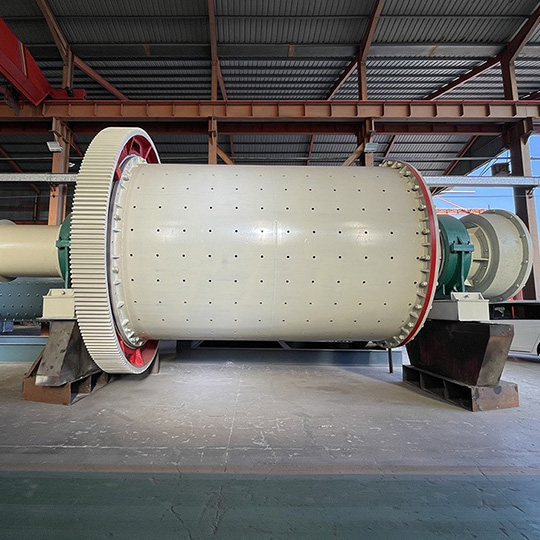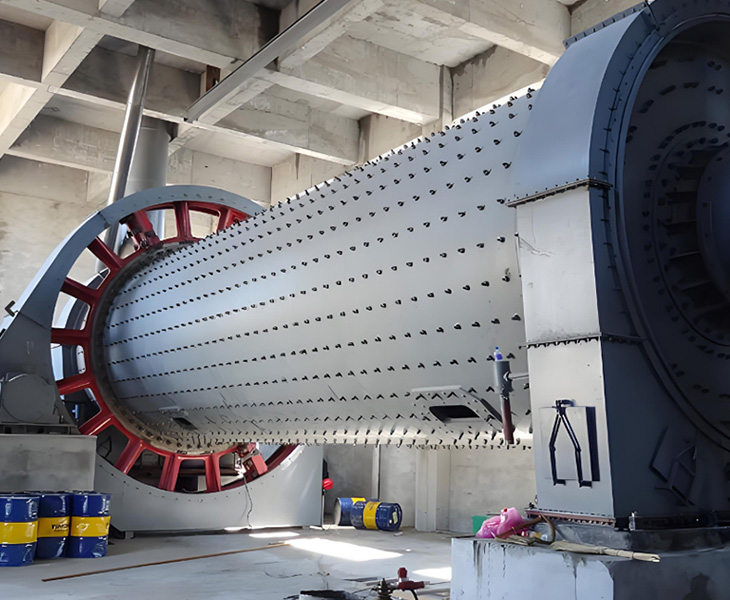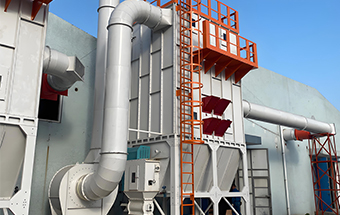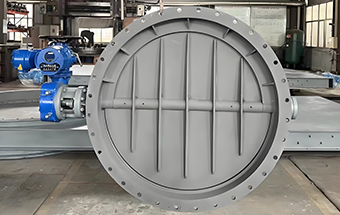Ball Mill
- Grinding particle size can be precisely controlled
- Adaptable to various material characteristics
- Strong industrial continuous operation capability
- Excellent grinding efficiency and energy consumption ratio
- Reliable structure and easy maintenance
- Great potential for intelligent monitoring upgrade
Industry-Leading Ball Mill Manufacturer
As a premier ball mill manufacturer, DARKO brings over a decade of grinding technology expertise to global industries. Our ISO-certified milling systems, exported to 30+ countries, provide reliable size reduction solutions for cement, mining, mineral processing, ceramics, and chemical applications – delivering high-efficiency grinding with precision particle control and energy-saving operation.
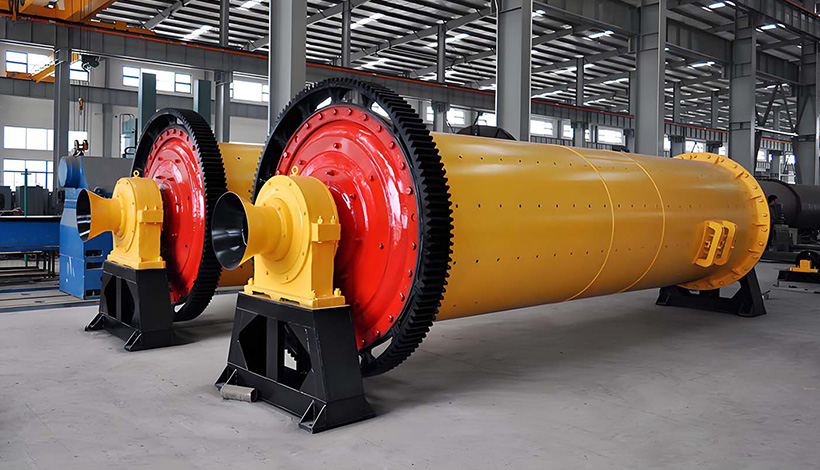
Ball Mill Working Principle
A ball mill consists of a horizontal rotating cylinder lined with steel plates and filled with grinding media (steel balls or rods). As the cylinder rotates, the grinding media are lifted by centrifugal force and then cascade down, crushing the material through impact and friction. The crushed material gradually moves from the feed end to the discharge end through the mill’s chambers, with finer grinding achieved in subsequent compartments.
In single-compartment mills, the entire grinding process occurs uniformly, while multi-compartment mills use partition plates to separate coarse and fine grinding stages. The final ground powder is discharged through the outlet hollow shaft, with particle size controlled by adjusting rotation speed, grinding media size, and material retention time.
Advantages of Ball Mills
The ball mill stands as the cornerstone equipment in mineral processing and powder preparation, offering high-efficiency grinding, precise particle control, material versatility, and continuous operation reliability.

Combines impact and abrasion mechanisms to achieve 30% higher grinding efficiency than conventional mills.

Adjustable rotation speed and grinding duration enable target particle sizes from 45μm to 300μm.

Processes both high-hardness ores (Mohs 7+) and heat-sensitive materials effectively.

Easily converts between wet and dry grinding processes with minimal adjustments.

Heavy-duty roller bearings support 24/7 operation with over 90% annual availability.

Optimized liner design reduces energy consumption by 15-30% with enclosed dust-proof operation.

IoT-ready for real-time tracking of temperature, vibration, and predictive maintenance.

Modular liner design allows replacement within 2 hours, minimizing downtime costs.
Our Service Process
Our integrated service delivers high-efficiency grinding solutions with guaranteed performance and responsive technical support.
We evaluate your material characteristics (hardness, moisture, target fineness) and production capacity to recommend the optimal ball mill type (wet/dry, single/multi-compartment).
Our process engineers design liner profiles, grinding media composition, and drive systems tailored to your specific ore/powder requirements.
Detailed pricing covering equipment, installation, shipping and after-sales service with no hidden costs.
Strict quality control at our ISO-certified factory guarantees reliable equipment performance.
Dedicated logistics team ensures on-time delivery with complete installation guidance and training.
24/7 technical support with scheduled maintenance alerts and fast spare parts delivery.
What is a Ball Mill?
The ball mill is a crucial equipment for material grinding after the crushing process. This type of grinding machine operates by loading a certain quantity of steel balls as grinding media inside its rotating cylinder.
Widely applied in cement production, silicate products, new building materials, refractory materials, fertilizers, ferrous and non-ferrous mineral processing, as well as glass and ceramic manufacturing industries, it performs dry or wet grinding for various ores and other grindable materials.
The ball mill is suitable for pulverizing diverse ores and materials, extensively used in mineral processing, construction materials, and chemical industries. It can be categorized into two grinding methods: dry-type and wet-type. Based on different discharge methods, it can also be classified into two types: grate discharge and overflow discharge.
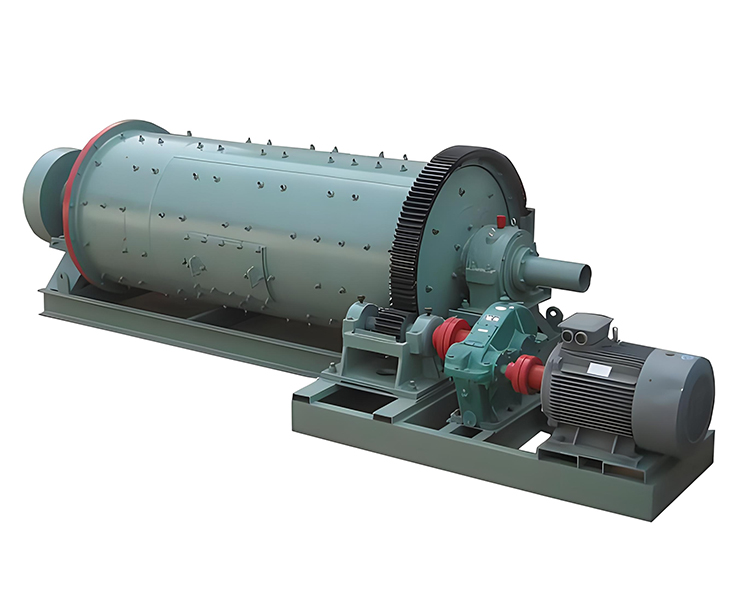
Cement Ball Mill
The cement ball mill is a horizontal cylindrical rotating device with external gear transmission. When the cylinder rotates, centrifugal force lifts the steel balls to a certain height before they fall to impact and grind the materials.
Specifically designed for cement raw material grinding, this industrial grinding equipment operates in two distinct modes:
- Dry-process grinding – For moisture-sensitive materials with air circulation
- Wet-process grinding – Utilizing water as transport medium for slurry formation
Key technical features:
- Heavy-duty girth gear drive system
- Standard capacity range: 5-150 t/h
- Final product fineness: 3000-3800 cm²/g (Blaine)
- Liner options: Wave, step, or corrugated types
Ball Mill Steel Ball
In a ball mill, the primary role of the steel balls is to impact and crush the materials, while also providing a certain grinding effect. Therefore, the purpose of ball grading is to meet both of these requirements. The effectiveness of the crushing directly affects grinding efficiency and ultimately impacts the mill’s production capacity. Whether the crushing requirements can be met depends on the rationality of the ball grading, which mainly includes the size of the steel balls, the number of ball diameter grades, and the proportion of balls of various specifications.
When determining these parameters, factors such as the size of the ball mill, its internal structure, and the required product fineness must be considered, along with the characteristics of the feed material (grindability, particle size, etc.).
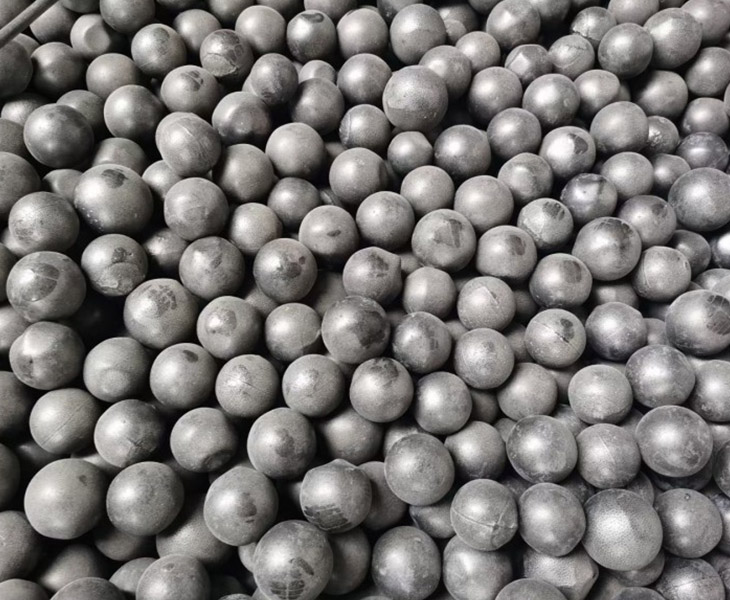

Structural Features
-
Main Bearing: Utilizes large-diameter self-aligning double-row roller bearings instead of traditional sliding bearings, reducing friction and energy consumption while enabling easier mill startup.
-
End Cap Design: Retains the conventional mill’s end cap structure with large-diameter feed and discharge ports for high throughput capacity.
-
Feeder System: Offers two simple, split-installation feeder options—combined feeder and drum feeder—for flexible material handling.
-
Smooth Operation: Eliminates inertial vibration, ensuring stable running, minimizing downtime for maintenance, and improving overall efficiency.
Mechanical Structure
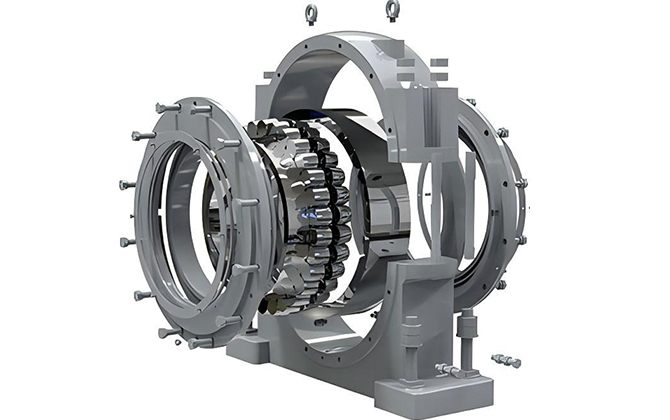

The ball mill consists of four main components: the feeding section, discharge section, rotary section, and transmission section (including reducer, pinion gear, motor, and electrical controls).
Key Features:
- Hollow Shaft: Made of cast steel with replaceable liners.
- Rotary Gear: Manufactured through cast-and-hobbing processes for precision.
- Cylinder Lining: Fitted with wear-resistant liners for enhanced durability.
- Smooth & Reliable Operation: Ensures consistent performance under heavy-duty conditions.
Core Components:
- Cylinder: Lined with abrasion-resistant materials.
- Bearings: Support and stabilize the rotating cylinder.
- Drive System: Comprises a motor, transmission gears, pulleys, and V-belts.
Note on “Blades”:
- Internal spiral blades at the feed/discharge ports are secondary components.
- Spiral conveyor blades (if used in auxiliary equipment) are not part of the mill itself.
Model Options:
-
Dry-Type or Wet Grate-Type: Selected based on material and discharge requirements.
-
Energy-Saving Design:
- Self-aligning spherical roller bearings (reducing friction and energy consumption).
- Extended conical discharge section (increases effective volume and optimizes grinding media distribution).
Applications:
Widely used for grinding in:
- Non-ferrous/ferrous metal beneficiation
- Non-metallic mineral processing
- Chemical and building material industries
Related Product
As a leading cement equipment manufacturer, we provide complete grinding and material handling systems to optimize your cement production line. In addition to high-efficiency ball mills, explore our premium equipment range:

Ideal for horizontal or inclined transportation of bulk materials with low energy consumption. Features durable construction, smooth operation, and customizable lengths/widths for mining, grain, and packaging applications.

Enclosed structure effectively prevents dust and leakage, specially designed for powders and small particles. Can be integrated into automated conveying systems, widely used in chemical and food processing industries.
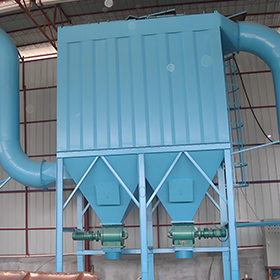
Incorporating advanced pulse-jet cleaning technology for automatic filter maintenance and continuous high-efficiency operation. Offers large air volume capacity with low energy consumption, making it ideal for woodworking and food processing applications.
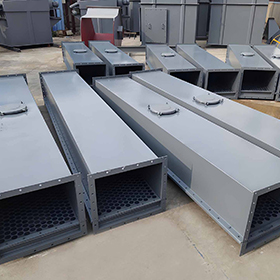
Pneumatic conveying solution for fine dry powders (e.g., cement, fly ash). Zero moving parts, energy-efficient airflow design with minimal maintenance requirements.
Professional Ball Mill System Custom Solutions
Precision-engineered for diverse grinding requirements
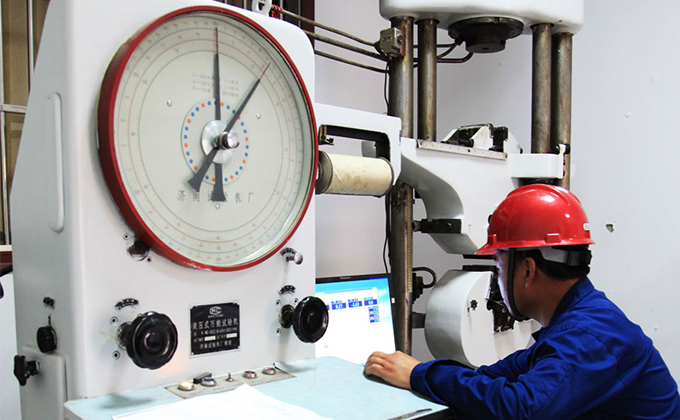
We provide both standard and customized ball mill systems to meet various material grinding requirements. Our engineering team designs complete grinding production lines – including ball mills, classifiers, and conveying equipment – based on your raw material characteristics, capacity needs, and plant layout. All equipment features wear-resistant alloy components with strict quality control to ensure seamless integration.
We offer full lifecycle support for ball mills, from installation and commissioning to production optimization. Our professional engineering team provides remote guidance. Using genuine wear parts and customized maintenance plans, we ensure continuous high-efficiency operation while regularly optimizing your grinding system performance through technical follow-ups.
More about Ball Mills
By fully understanding the relevant technical parameters and structural technology of the ball mills , you will have a clearer understanding of the performance advantages and application value of the equipment.
- Zhongkuang Ball Mill Technical Parameters
- Cone Ball Mill Main Specifications
- Cement Mill Main Specifications
- Ceramic Ball Mill Technical Parameters
| Model | Cylinder Speed (rpm) | Ball Load (t) | Feed Size (mm) | Discharge Size (mm) | Capacity (t/h) | Motor Power (kW) | Weight (t) |
|---|---|---|---|---|---|---|---|
| MQ750×1060 | 1.6 | 4 | ≤20 | 1.075-0.89 | 1.14~0.34 | 1.5 | 1.6 |
| Ф900×3000 | 36 | 1.7 | ≤20 | 1.075-0.89 | 1.1-3.5 | 22 | 1.6 |
| Model | Feed Size (mm) | Discharge Size (mm) | Capacity (t/h) | Motor Power (kW) | Weight (kg) |
|---|---|---|---|---|---|
| GZM900×2100 | ≤15 | 1.075-0.83 | 1.7-3.5 | 15 | 3900 |
| GZM1200×2800 | ≤25 | 1.075-0.6 | 2-6 | 37 | 13000 |
| GZM1500×3500 | ≤25 | 1.075-0.4 | 1.5-12 | 75 | 17500 |
| GZM1830×3600 | ≤25 | 1.075-0.4 | 5-22 | 130 | 33500 |
| GZM2100×3600 | ≤25 | 1.075-0.4 | 15-36 | 210 | 46800 |
| GZM2400×3000 | ≤25 | 1.075-0.4 | 22-44 | 245 | 59000 |
| Specification (m) | Capacity (t/h) | Mill Type | Drive Type | Power (kW) | Reducer | Weight (t) | Notes | |
|---|---|---|---|---|---|---|---|---|
| Model | Ratio | |||||||
| Φ2.2×7m | 8-9 | Open-circuit | Edge | 380 | ZD70 | 5 | 54 | |
| Φ2.2×7.5m | 10-11 | Open-circuit | Edge | 380 | ZD70 | 5 | 63 | |
| Φ2.2×8m | 10-12 | Open-circuit | Edge | 380 | ZD70 | 5 | 65 | |
| Φ2.2×9.5m | 14-16 | Open-circuit | Edge | 475 | ZD70 | 5 | 70 | |
| Φ2.4×10m | 19-19 | Open-circuit | Edge | 630 | JR75 | 1.64 | 1.5 | Excluding motor |
| Φ2.4×11m | 19-21 | Open-circuit | Edge | 630 | RZD80 | 1.3 | 1.2 | Excluding motor |
| Φ2.4×13m | 21-23 | Open-circuit | Edge | 800 | MBY710 | 1.1 | 1.2 | Excluding motor |
| Φ2.6×13m | 28-32 | Open-circuit | Edge | 1000 | MBY800 | 1.1 | 148 | |
| Φ2.6×13m | 28-32 | Open-circuit | Center | 1000 | MFY100 | 1.5 | 1.73 | |
| Φ3×12m | 32-35 | Open-circuit | Edge | 1250 | MBY900 | 1.1 | 1.6 | |
| Φ3×13m | 34-37 | Open-circuit | Edge | 1400 | MBY900 | 1.1 | 1.26 | |
| Φ3.2×13m | 45-50 | Open-circuit | Edge | 1600 | MBY1000 | 1.1 | 1.26 | |
| Φ3.8×13m | 60-62 | Open-circuit | Center | 2500 | MFY250 | 1.5 | 204 | |
| Φ4.2×13m | 85-87 | Open-circuit | Center | 3530 | JQS3550 | 1.6 | 254 |
| Model | Loading Capacity (t/batch) | Cylinder Speed (rpm) | Power (kW) |
|---|---|---|---|
| 600×700 | 1.05 | 50 | 1.02 |
| 800×600 | 1.075 | 42 | 3 |
| 900×1200 | 1.2 | 1.5 | 1.5 |
| 1300×1500 | 1.5 | 33 | 1.5 |
| 1500×1800 | 1.2 | 1.5 | 11 |
| 1800×2000 | 1.5 | 24 | 15 |
| 2600×2800 | 5 | 1.5 | 37 |
| 3000×3800 | 10 | 1.5 | 1.2 |
| 3200×4600 | 15 | 1.5 | 75 |
| 3400×6600 | 18 | 13 | 135 |
A ball mill rotates a cylindrical shell with grinding media (steel balls), where materials are crushed by impact and attrition. The centrifugal force lifts balls, which then cascade down to pulverize materials to 45-300μm fineness.
Dry mills suit heat-sensitive materials (e.g., cement) with 10-15% lower energy use, while wet mills (e.g., mineral processing) achieve finer particles but require water and wear-resistant liners.
-
Optimize ball size ratio (e.g., 40% Φ100mm + 60% Φ60mm)
-
Adjust material feed rate to 75-85% of max capacity
-
Install pre-grinding with roller press (boost 30-50% output)
Related Product
-
Safe,efficient hazardous dust removal with zero ignition risk.
-
-
-
-
Ball Mill Selection Guide
1. Ensure Production Capacity
Select a mill that achieves the target grinding fineness while meeting specified production output.
2. Overdesign Capacity Margin
Factor in ore hardness and fineness variations (e.g., deeper ore deposits tend to be harder/finer). Choose a mill capable of adapting to such changes while ensuring smooth initial operation.
3. Conduct Grinding Tests
For large-scale concentrators without existing data, mandatory grinding tests should provide baseline metrics for mill selection and scale-up calculations.
4. Consider Equipment Scale-up
Modern design favors larger equipment for:
• Reduced total weight/floor space
• Fewer operating systems/personnel
• Lower capital/operating costs
Note: Larger mills demand higher operational expertise as minor downtime significantly impacts output.
5. Prioritize Operational Reliability
Opt for high-availability models within each equipment class. While rod/autogenous mills may have lower uptime, they remain situationally viable.
6. Analyze Ore Properties
Evaluate mineral hardness and grade to select energy-efficient mills (e.g., models with roller bearings can reduce power use by 20-30%).
7. Target Particle Size Requirements
Match compartment diaphragm apertures and segmentation to required product fineness (typically 45-300μm adjustable).
8. Size Appropriately
Select drum diameter/length based on throughput needs (standard range: 1-150 t/h).
9. Choose Next-Gen Upgraded Models
Source from manufacturers specializing in your mineral type (e.g., lithium ore vs. cement clinker).
10. Verify Critical Components
Inspect:
• Gear module specifications (pinion & girth gears)
• Motor/reducer OEM qualifications
• Liner material grades (e.g., high-chrome steel)
• Drum shell thickness (typically 15-50mm)
Pro Tip: For >Φ3m mills, request FEA (Finite Element Analysis) reports on stress distribution.
Ball mills are industrial grinding machines used to:
-
Reduce particle size (typically to 45-300μm)
-
Blend materials (e.g., cement raw meal)
-
Prepare powders for mineral processing, ceramics, or pharmaceuticals
Key applications: Cement production, ore beneficiation, lithium battery material preparation
| Feature | Ball Mill | Roller Mill |
|---|---|---|
| Grinding Mechanism | Impact + attrition | Compression |
| Energy Efficiency | 25-35 kWh/t | 15-25 kWh/t (30% more efficient) |
| Particle Shape | Irregular | More uniform |
| Maintenance | Frequent liner/ball replacement | Roller refurbishment every 8,000-10,000h |
Best for: Ball mills – ultra-fine grinding; Roller mills – high-throughput pre-grinding
Advantages:
✅ Handles abrasive materials (e.g., quartz)
✅ Wet/dry grinding flexibility
✅ Scalable (lab to 150t/h industrial models)
Disadvantages:
❌ High energy consumption
❌ Noise/vibration (85-95dB)
❌ Complex maintenance (liner changes every 2-5k hours)







